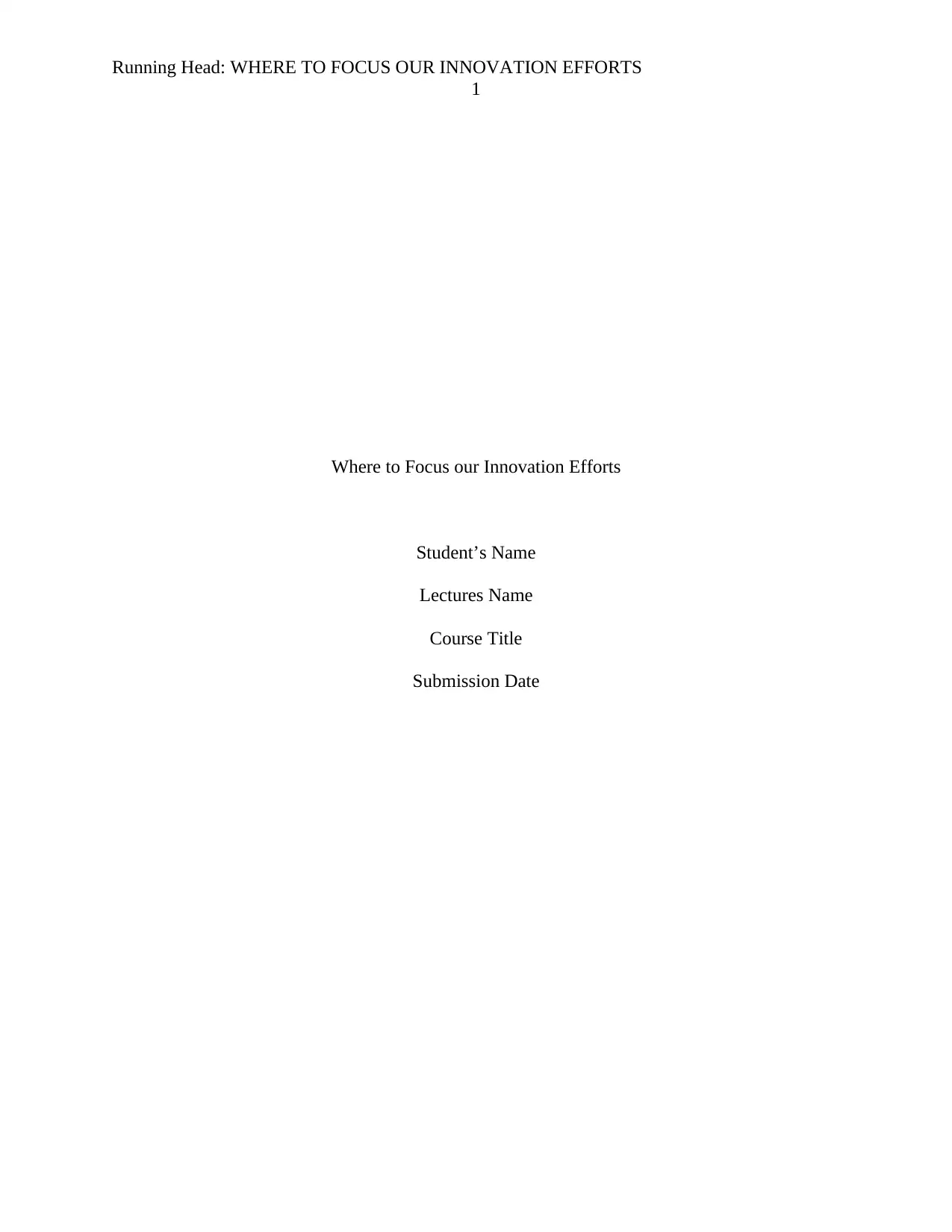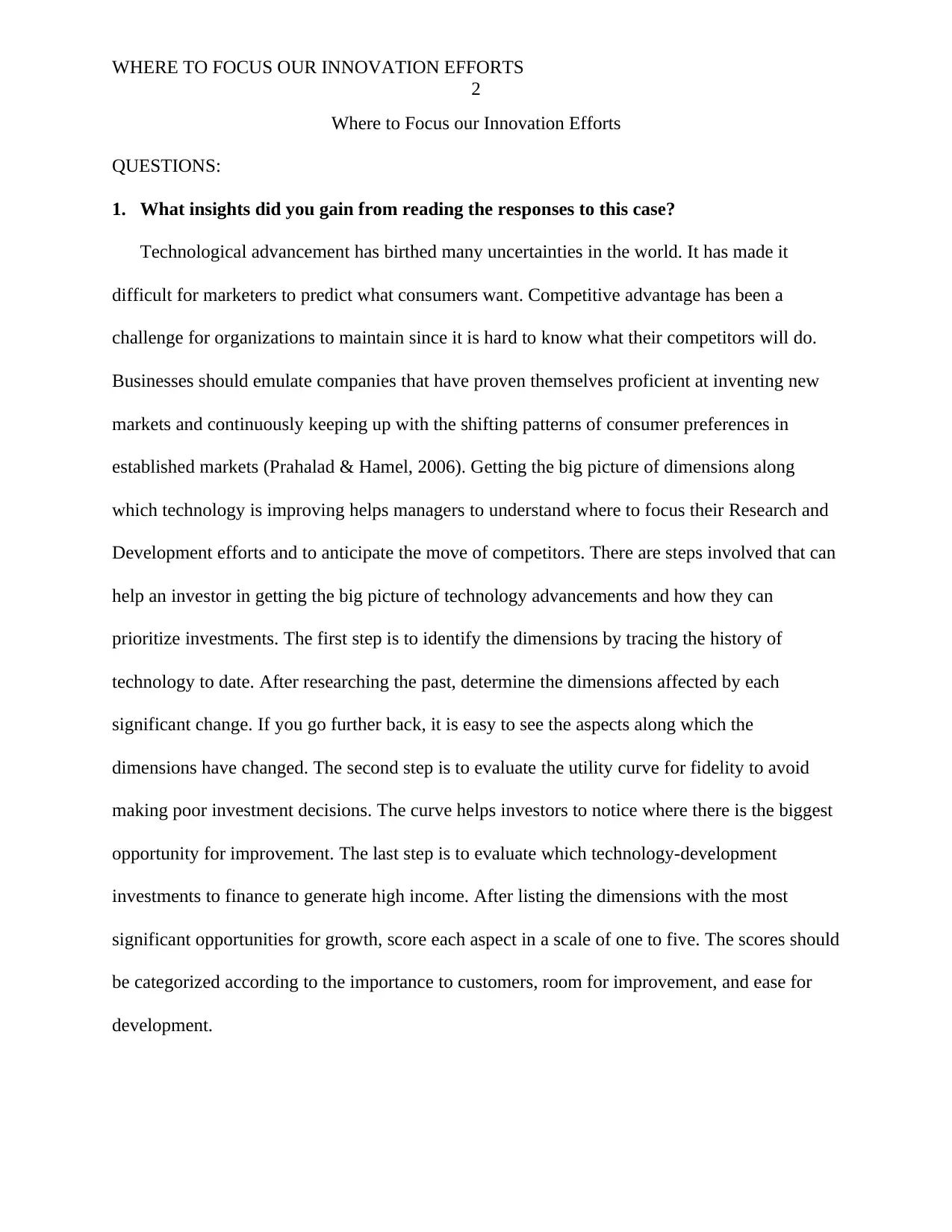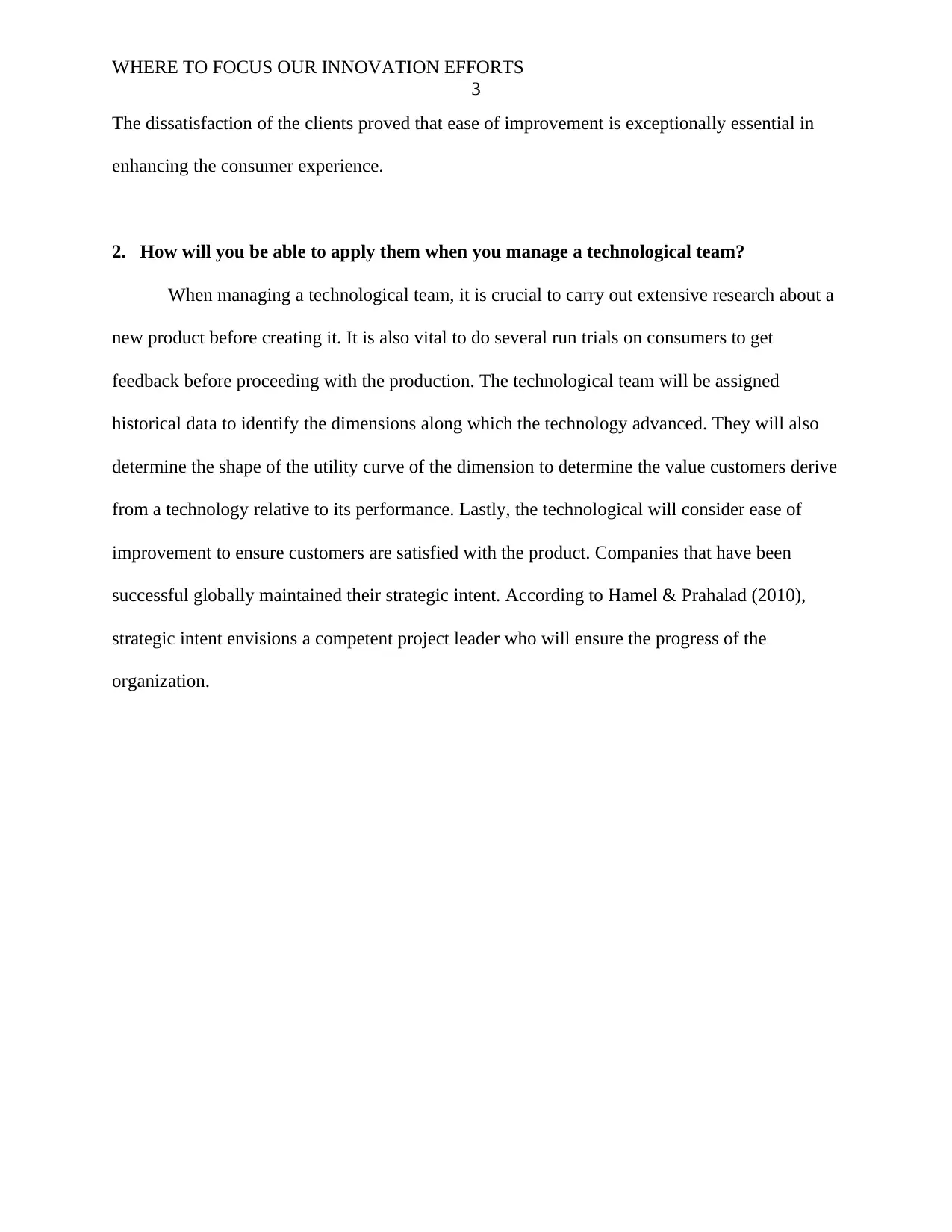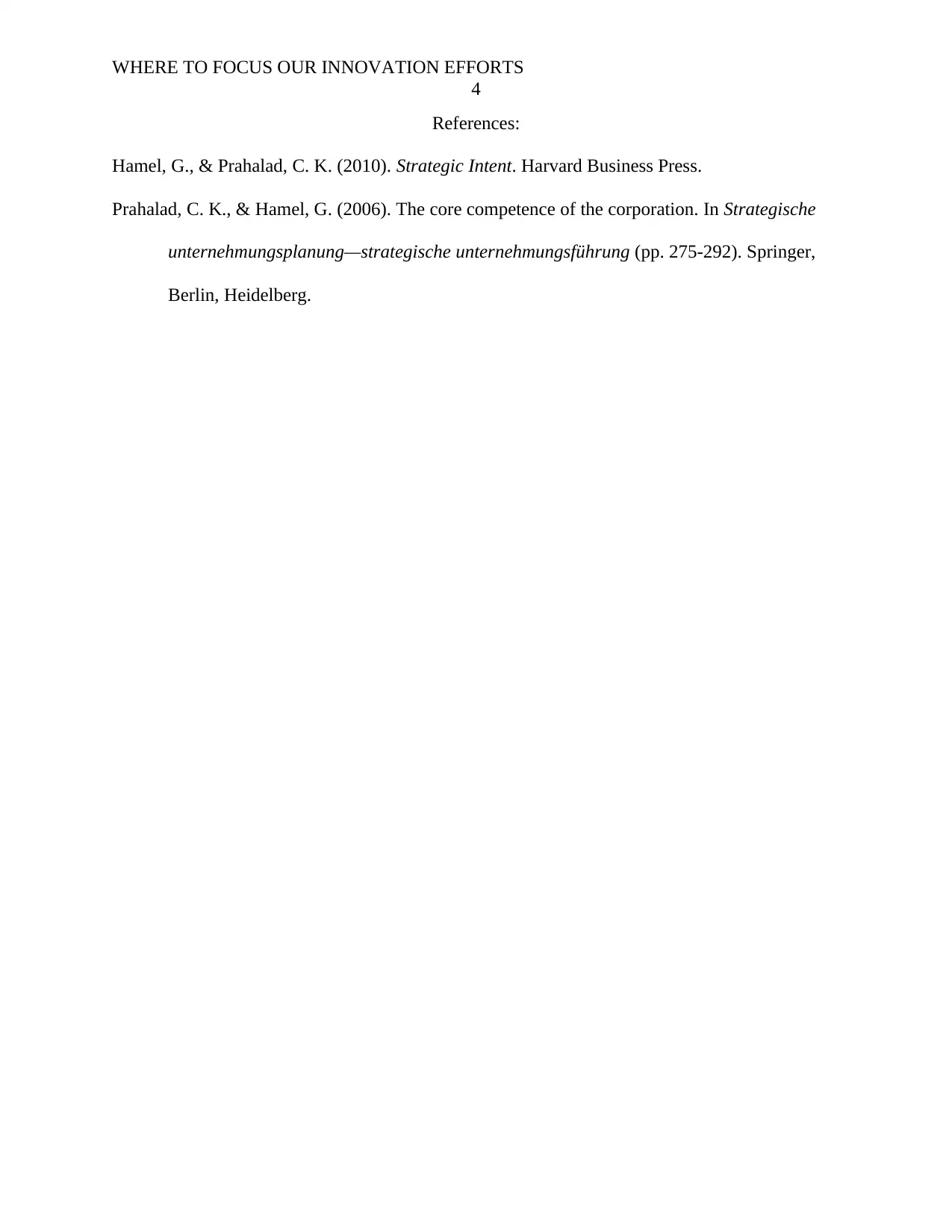Strategic Innovation: Insights & Application in Tech Team Leadership
VerifiedAdded on 2023/04/03
|4
|518
|195
Case Study
AI Summary
This case study delves into the critical aspects of focusing innovation efforts within organizations, particularly in the context of technological advancements and evolving consumer preferences. It emphasizes the importance of understanding the dimensions along which technology improves to guide research and development investments effectively. The analysis involves tracing the history of technology, evaluating utility curves to identify opportunities, and prioritizing investments based on customer importance, room for improvement, and ease of development. The study highlights the significance of aligning technological development with customer satisfaction and strategic intent, drawing from the experiences of successful global companies. Furthermore, it addresses the practical application of these insights in managing a technological team, emphasizing the need for thorough research, consumer feedback, and a focus on continuous improvement to ensure product success and customer satisfaction. Desklib provides access to this and other solved assignments.
1 out of 4





![[object Object]](/_next/static/media/star-bottom.7253800d.svg)